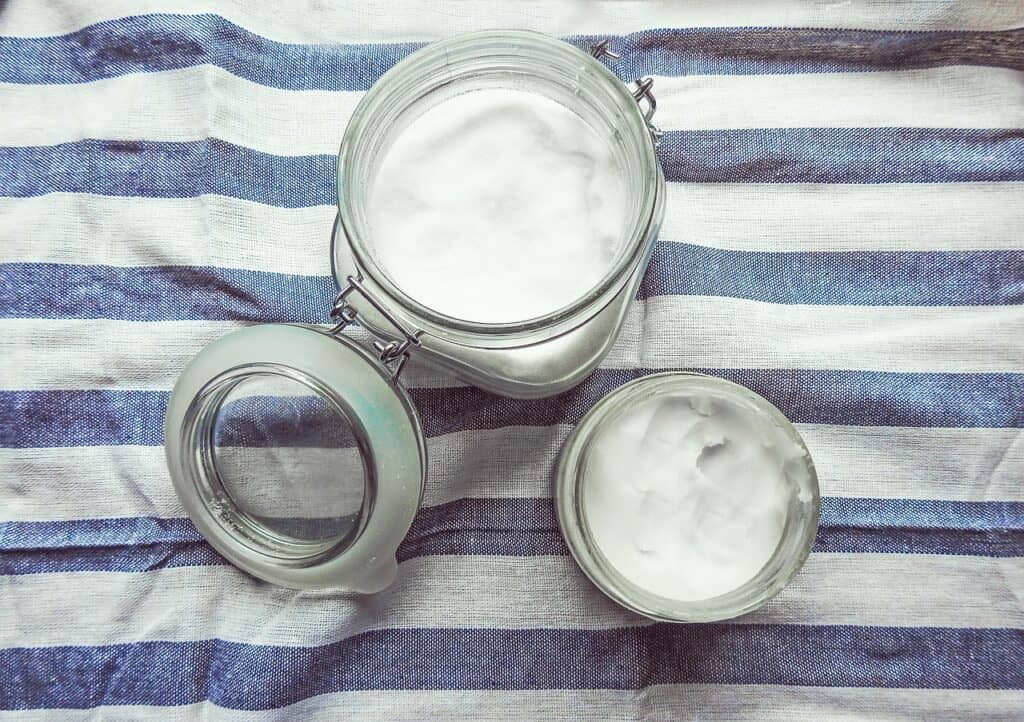How to Bathe your Dog with Coconut Oil
Bathing your dog with coconut oil is not just about keeping them clean; it’s a beneficial practice that can enhance their skin and coat health.

Here’s a detailed guide on why, when, and how you should consider using coconut oil for your dog’s bath time, as well as when it might be better to skip it.
Why Use Coconut Oil?
Coconut oil has been lauded for its health benefits, both for humans and pets. For dogs, it can offer the following advantages:
- Skin Health: Coconut oil can help soothe dry skin, reduce allergic reactions, and improve overall skin condition. Its moisturizing properties can be beneficial for dogs with dry or itchy skin.
- Coat Condition: It leaves the fur soft, shiny, and smooth. This is great for dogs with dull or coarse coats.
- Antifungal and Antibacterial Properties: Regular use can help prevent fungal and bacterial infections on the skin.
- Natural and Safe: For pet owners who prefer natural pet care solutions, coconut oil is a safe and chemical-free option.
When to Use Coconut Oil
- Dry or Itchy Skin: If your dog suffers from dry, itchy skin or has conditions like eczema or dermatitis, a coconut oil bath can provide relief and healing.
- Dull Coat: For coats lacking luster, coconut oil can add shine and softness.
- Preventative Care: Using coconut oil occasionally can prevent skin and coat issues from developing.
Step-by-Step Guide on How to Bathe Your Dog with Coconut Oil
- Choose the Right Coconut Oil: Opt for virgin, unrefined coconut oil for the best natural benefits.
- Preparation: Start with a clean dog. It’s best to apply coconut oil on a slightly damp coat, so consider this as a post-bath treatment or wet your dog’s fur with a spray bottle.
- Application: Rub a small amount of coconut oil between your hands to warm it up, then gently massage it into your dog’s skin and coat. Focus on dry spots, avoiding the eyes and inside the ears.
- Comb Through: Use a comb to ensure even distribution and to help the oil reach the skin.
- Leave-In Time: For deep conditioning, let the coconut oil sit on your dog’s coat for about 5-10 minutes.
- Rinse Thoroughly: If you’ve used a lot of oil, you might need to shampoo your dog again to remove excess oil. Otherwise, a good rinse with warm water should suffice.
- Dry: Towel dry or use a blow dryer only on a cool setting to remove moisture without stripping away all the oil.
When Not to Use Coconut Oil
While coconut oil is generally safe, there are circumstances when it’s better to avoid it:
- Overuse: Too much coconut oil can lead to a greasy coat or cause an upset stomach if your dog licks itself excessively. For instance, you shouldn’t use coconut oil each time you clean your dog after their daily walk.
- Severe Skin Conditions: For serious skin issues, consult your vet first. Coconut oil can help with minor irritations but isn’t a cure-all.
- Allergies: Though rare, some dogs might be allergic to coconut oil. Start with a small amount and watch for any adverse reactions.



